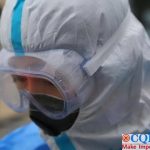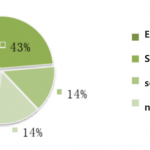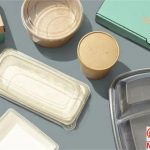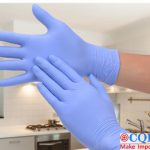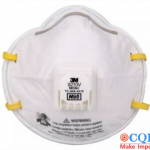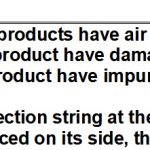What Is China Disposable Medical Gloves Standard?
Since the outbreak of New Crown Pneumonia, disposable medical protective products have received extensive attention. In order to popularize the knowledge of relevant standards, this paper interprets the relevant standards of China disposable medical gloves.
In addition to articles related to gloves, we also shared other articles. We also hope to have the honor to be read by everyone. For example infrared thermometer testing consultation, Meltblown fabric quality inspection…
Types Of Disposable Medical Gloves In China
1.China disposable medical gloves can be divided into two categories according to the invasion force during use:
- Disposable medical examination gloves: short-term non-invasive aseptic operation for patient care (generally less than 60 minutes). Because they are only suitable for short-term operation, the inspection gloves are usually thinner and not as strong as surgical gloves, and the stress requirements during tearing and stretching are lower than those of surgical gloves.
- Disposable surgical gloves: for invasive surgery. The stress requirements for breaking and stretching are stricter than those for checking gloves.

2.China disposable medical gloves can be divided into two categories according to the materials made:
- Gloves made of rubber latex or rubber solution;
- Gloves made of polyvinyl chloride;
Among them, rubber latex or rubber solution medical gloves can be subdivided into:
Category 1: gloves mainly made of natural rubber latex;
Category 2: gloves mainly made of nitrile rubber latex, neoprene latex, styrene-butadiene rubber solution, styrene-butadiene rubber emulsion or thermoplastic elastomer solution.
China Disposable Medical Gloves Standard Interpretation
GB 10213-2006 “Disposable Medical Rubber Examination Gloves” and GB 24786-2009 “Disposable Polyvinyl Chloride Medical Examination Gloves” respectively stipulate the relevant requirements for sterile or non-sterile rubber examination gloves and polyvinyl chloride medical examination gloves used to prevent cross infection between patients and users during medical examination and diagnosis and treatment, as well as the performance, safety and technical requirements for examination gloves used to treat contaminated medical materials.
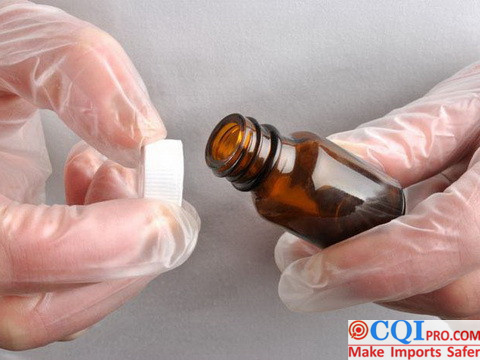
1)Classification
Disposable medical rubber inspection gloves are divided into two material categories: gloves mainly made of natural rubber latex and gloves mainly made of nitrile rubber latex, chloroprene rubber latex, styrene-butadiene rubber solution, styrene-butadiene rubber emulsion or thermoplastic elastomer solution. There are four surface types: pockmarked surface, smooth surface, powder surface and powder-free surface.
Disposable polyvinyl chloride medical examination gloves are divided into four types: partial or full pockmarked gloves, smooth gloves, powdered gloves and non-powdered gloves.
Among them, powder gloves are made by adding powder during glove processing, usually for ease of wearing. Powder-free gloves are not additionally added with powder materials in the glove manufacturing process to facilitate wearing. Powder-free gloves can also be expressed by “without powder,”, “no powder”, ” not added power” or other similar words.
2)Material requirements
GB 10213-2006 stipulates that disposable medical rubber inspection gloves should be made of natural rubber latex, nitrile rubber latex, styrene-butadiene rubber or thermoplastic elastomer solution or styrene-butadiene rubber emulsion. In order to facilitate the wearing of gloves, a lubricant, powder or polymer coating conforming to ISO 10993 can be used for surface treatment. Any color materials used therein should be nontoxic, and the materials used for surface treatment must be easy to move and bioabsorb.
GB 24786-2009 stipulates that disposable PVC medical examination gloves should be made of PVC material. In order to facilitate wearing, surface treatment agents, lubricants, powders or polymeric coatings can be used. At the same time, it is required that the materials used should be non-toxic materials and the removable substances used for surface treatment should be bioabsorbable.
3)Technical requirements
In addition to performance and safety requirements such as size, impermeability, stretchability, etc., if gloves are sterilized, the type of sterilization treatment shall be disclosed when required, and shall be packaged separately or in pairs. The unit packaging shall clearly indicate the following contents:
(1) the name or trademark of the manufacturer or supplier;
(2) the materials used;
(3) “pockmarked face” or “smooth face”, “powder” or “no powder”, or words that have such effect on the finished glove product;
(4) Dimensions and specifications;
(5) Once gloves have been treated with any surface powder materials, warnings should be given and surface powder should be removed aseptically before use.
(6) the batch number identified by the manufacturer;
(7) Date of manufacture or similar words, year (four digits) and month;
(8) the words “sterilization, unless the package is opened or damaged”;
(9) the words “one-time use”;
(10) the words “check gloves”;
(11) “Made of natural rubber latex that may cause allergic reactions”, “Products contain plasticizers that may be harmful to users (the nature of plasticizers should be disclosed)”.
Non-sterilized packaging shall be marked with the same contents as sterilized packaging except the words “sterilization unless the packaging is opened or damaged”.
For multi-unit packaging, the quantity of gloves shall be marked in addition to the contents indicated in the unit packaging requirements, and storage instructions shall be attached.
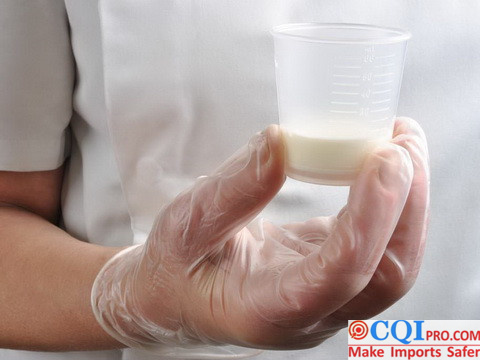
Distinction Between Sterilized And Non-Sterilized Gloves
GB 7543-2006 “Disposable Sterilized Rubber Surgical Gloves” and GB/T 24787-2009 “Disposable Non-Sterilized Rubber Surgical Gloves” respectively specify the performance, safety and technical requirements of packaged sterilized or non-sterilized rubber surgical gloves for preventing cross infection between patients and users in surgical operations.
1)Classification
Disposable sterilized rubber surgical gloves are classified into categories, designs and surface forms. It is divided into two material categories: gloves mainly made of natural rubber latex and gloves mainly made of nitrile rubber latex, chloroprene rubber latex, styrene-butadiene rubber solution, styrene-butadiene rubber emulsion or thermoplastic elastomer solution. There are two design types: straight type and finger bending to palm surface. There are four kinds of surface forms: pitted surface, smooth surface, powder surface and powder surface.
Disposable non-sterile rubber surgical gloves are classified by type, design, surface form and attachment form. There are two types of gloves made of natural rubber latex and gloves made of neoprene latex, styrene-butadiene rubber solution, styrene-butadiene rubber emulsion or thermoplastic elastomer solution. There are two design types: straight type (R type) and curved type (C type). According to the surface type of the product adhesive film, there are two types: pitted surface (T type) and smooth surface (S type). There are three types of powder (P type), no powder (F type) and coating (C type) according to the adhesion type of the inner surface of the product.
2)Material requirements
GB 7543-2006 stipulates that disposable sterilized rubber surgical gloves are made of natural rubber latex, nitrile rubber latex, chloroprene rubber latex, styrene-butadiene rubber or thermoplastic elastomer solution, or styrene-butadiene rubber emulsion. For ease of wearing, surface treatment can be carried out using lubricants, powders or polymer coatings that meet ISO 10993 requirements. Any pigment used should be non-toxic and the movable substance used for surface treatment must be bioabsorbable.
GB/T 24787-2009 stipulates that disposable non-sterile rubber surgical gloves are made of natural rubber latex, neoprene latex, styrene-butadiene rubber or thermoplastic elastomer solution emulsion, or styrene-butadiene rubber emulsion. For ease of wearing, any lubricant, powder or polymer coating conforming to GB/T 16886 can be used for surface treatment. Any pigment used should be non-toxic and the movable substance used for surface treatment should be bioabsorbable.
3)Technical requirements
The technical requirements are the same except that the tensile property is stricter than that of medical examination gloves. The unit packaging shall be marked with the words “surgical gloves” and the design type of “straight” or “curved” according to the purpose of the gloves. The other marked contents shall be the same as those indicated in the packaging requirements of medical examination gloves.
CQI5 is committed to providing importers worldwide with product quality inspection services that far exceed those of our peers. If you are planning to import or have imported from China or Southeast Asian countries, please contact us cs’@’cqipro.com to learn more about how we can make your imports safer.
This article is an original article for CQI Inspection, who is committed to providing high-quality product inspection technology and know-how sharing for global importers and retailers to make imports safer.
All rights reserved. The contents of this website provided by CQI Inspection may not be reproduced or used without express permission.
For reprint, please contact with CQI Inspection, thank you.

